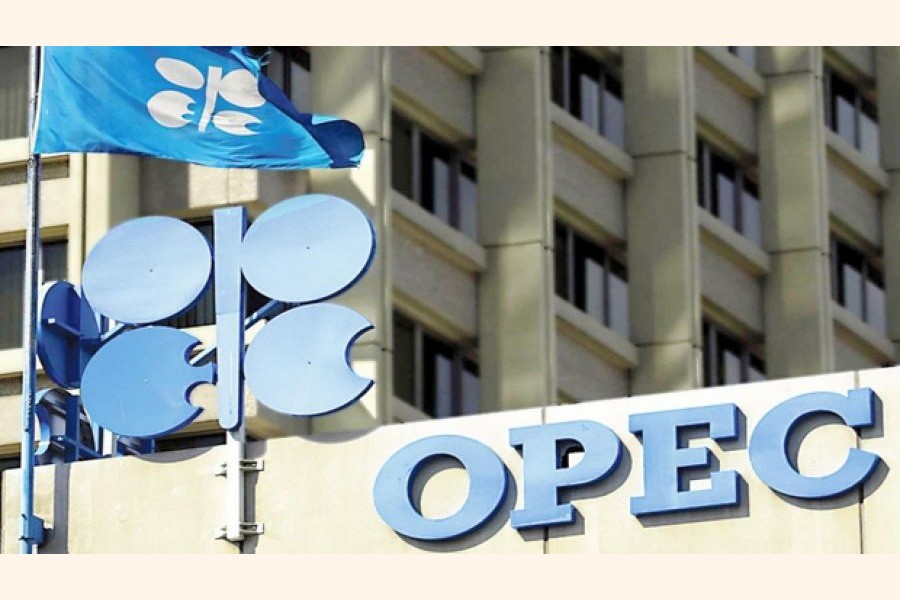
OPEC sees steeper oil demand drop as virus remains challenging
Oil slips as demand concerns rise, Libya output looms
Tuesday, 15 September 2020

LONDON, Sept 14 (Reuters): World oil demand will fall more steeply in 2020 than previously forecast due to the coronavirus and recover more slowly than expected next year, OPEC said on Monday, potentially making it harder for the group and its allies to support the market.
World oil demand will tumble by 9.46 million barrels per day (bpd) this year, the Organisation of the Petroleum Exporting Countries (OPEC) said in a monthly report, more than the 9.06 million bpd decline expected a month ago.
Oil prices have collapsed as the coronavirus crisis has curtailed travel and economic activity. While some countries have eased lockdowns, allowing demand to recover, a rising number of new cases and higher oil output have weighed on prices.
"Risks remain elevated and tilted to the downside, particularly related to the development of Covid-19 infection cases as well as possible cures," OPEC said of the 2021 outlook. "Increased usage of teleworking and distance conferencing is estimated to limit transportation fuels from fully recovering to 2019 levels."
OPEC also cut its demand forecast for 2021 and sees consumption rising by 6.62 million bpd, 370,00 bpd less than expected last month.
To tackle the drop in demand, OPEC and its allies, known as OPEC+, agreed to a record supply cut of 9.7 million bpd that started on May 1, while the United States and other nations said they would pump less.
In the report, OPEC said its output rose by 760,000 bpd to 24.05 million bpd in August, as the 9.7 million bpd cut tapered to a reduction of 7.7 million bpd from Aug. 1.
That amounted to 103 per cent compliance with the pledges, according to a Reuters calculation - up from July's figure of 97 per cent.
A monitoring panel of OPEC+ ministers meets on Thursday to discuss the market.
The report also forecast demand for OPEC crude will be lower than expected this year and next, as supply increases outside the group and because of the reduced global demand outlook.
OPEC said demand for its crude this year will average 22.6 million bpd, down 700,000 bpd from the previous forecast. Next year's forecast was cut by 1.1 million bpd.
Meanwhile, oil prices slipped on Monday amid concerns about a stalled global economic recovery and falling fuel demand, as Libya signalled it would end its months-long blockade and resume output, adding yet more supply to the market.
Brent crude LCOc1 was down 33 cents, or 0.8 per cent, at $39.50 a barrel while US West Texas Intermediate (WTI) crude futures CLc1 were down 34 cents, or 0.9 per cent, at $36.99 a barrel.
Both contracts ended last week lower, falling for a second week in a row. "(Coronavirus) infection rates are on the rise again, there are localized lockdowns introduced in a growing number of countries hindering regional economic growth and the number of unemployed is failing to fall significantly," oil broker PVM's Tamas Varga said. "This leads to dismal oil demand growth."
In Libya, commander Khalifa Haftar committed to ending a months-long blockade of oil facilities, a move that would add more supplies to the market, although it was unclear if oil fields and ports would begin operations.
"The announcement that the blockade of Libyan oil export terminals may be about to end will add to the woes of OPEC+'s meeting this week," said Jeffrey Halley, senior market analyst at OANDA.
The Organisation of the Petroleum Exporting Countries (OPEC) and allies, a grouping known as OPEC+, meets on Sept. 17 to discuss compliance with deep cuts in production, although analysts don't expect further reductions to be made.
However, Tropical Storm Sally gained in strength in the Gulf of Mexico west of Florida on Sunday and was poised to become a category 2 hurricane. The storm is disrupting oil production for the second time in less than a month after hurricane Laura swept through the region.
Typically oil rises when production is shut down, but with the coronavirus pandemic getting worse demand concerns are to the fore, while global supplies continue to rise. The United States is the world's biggest oil consumer and producer.